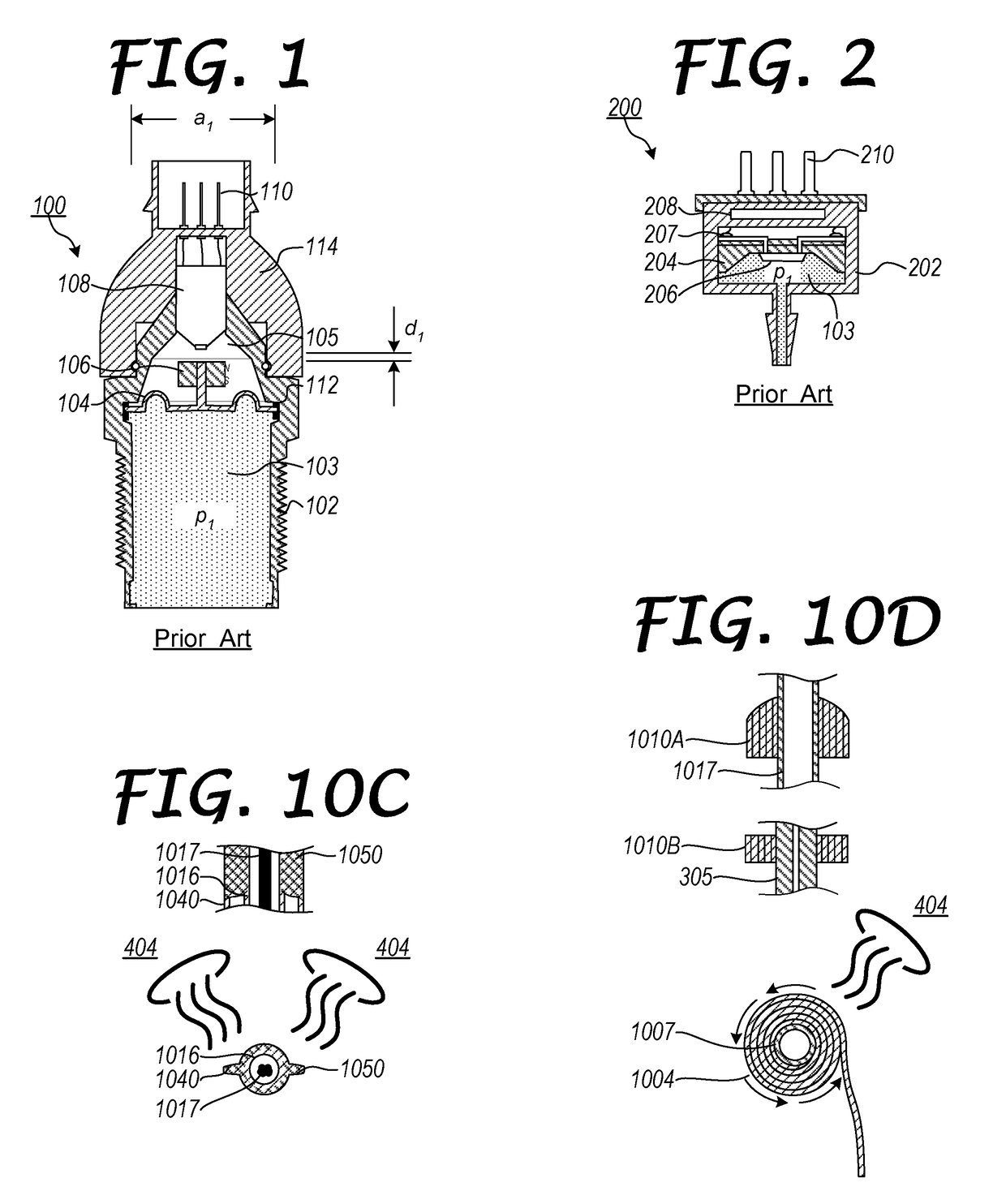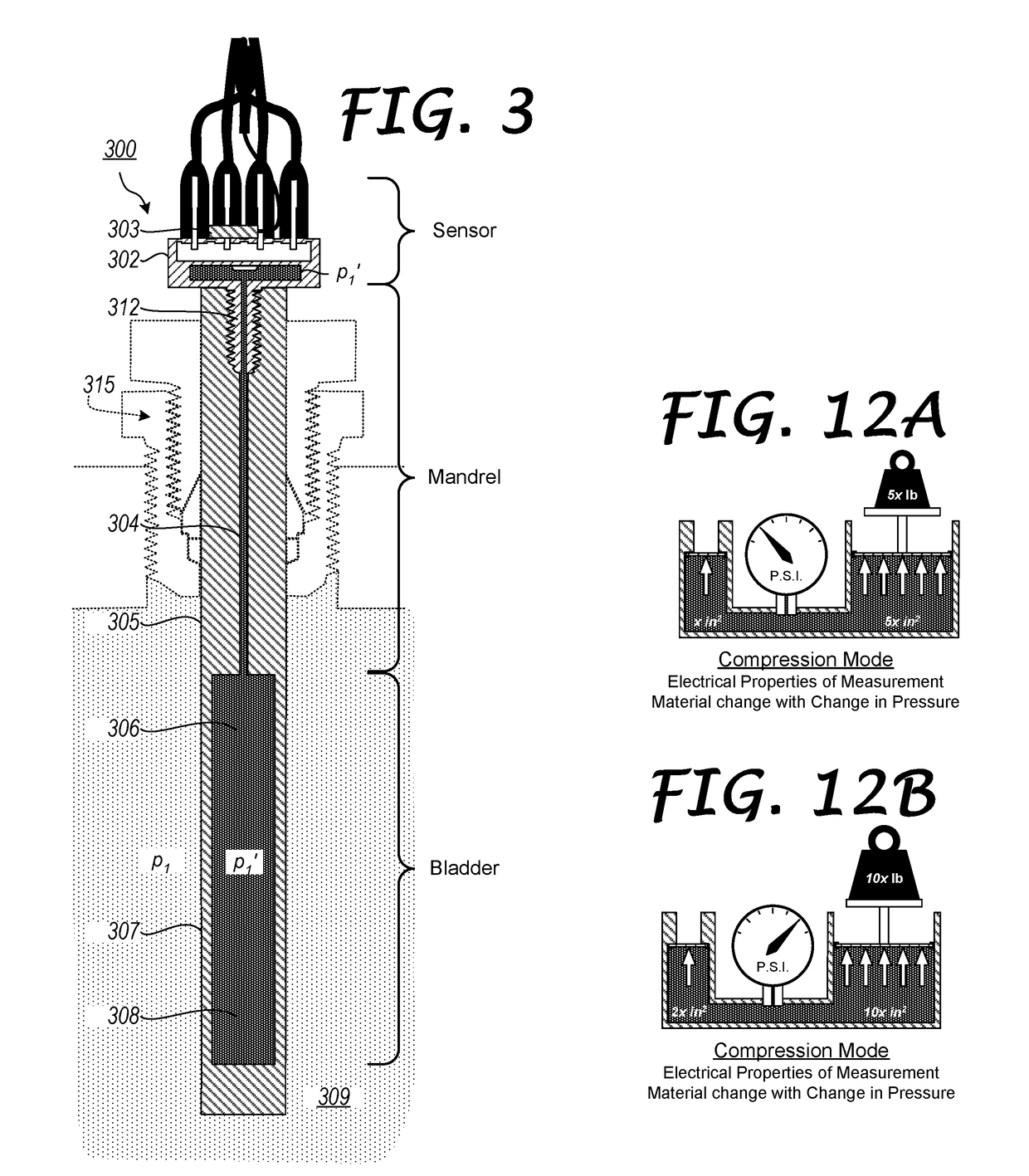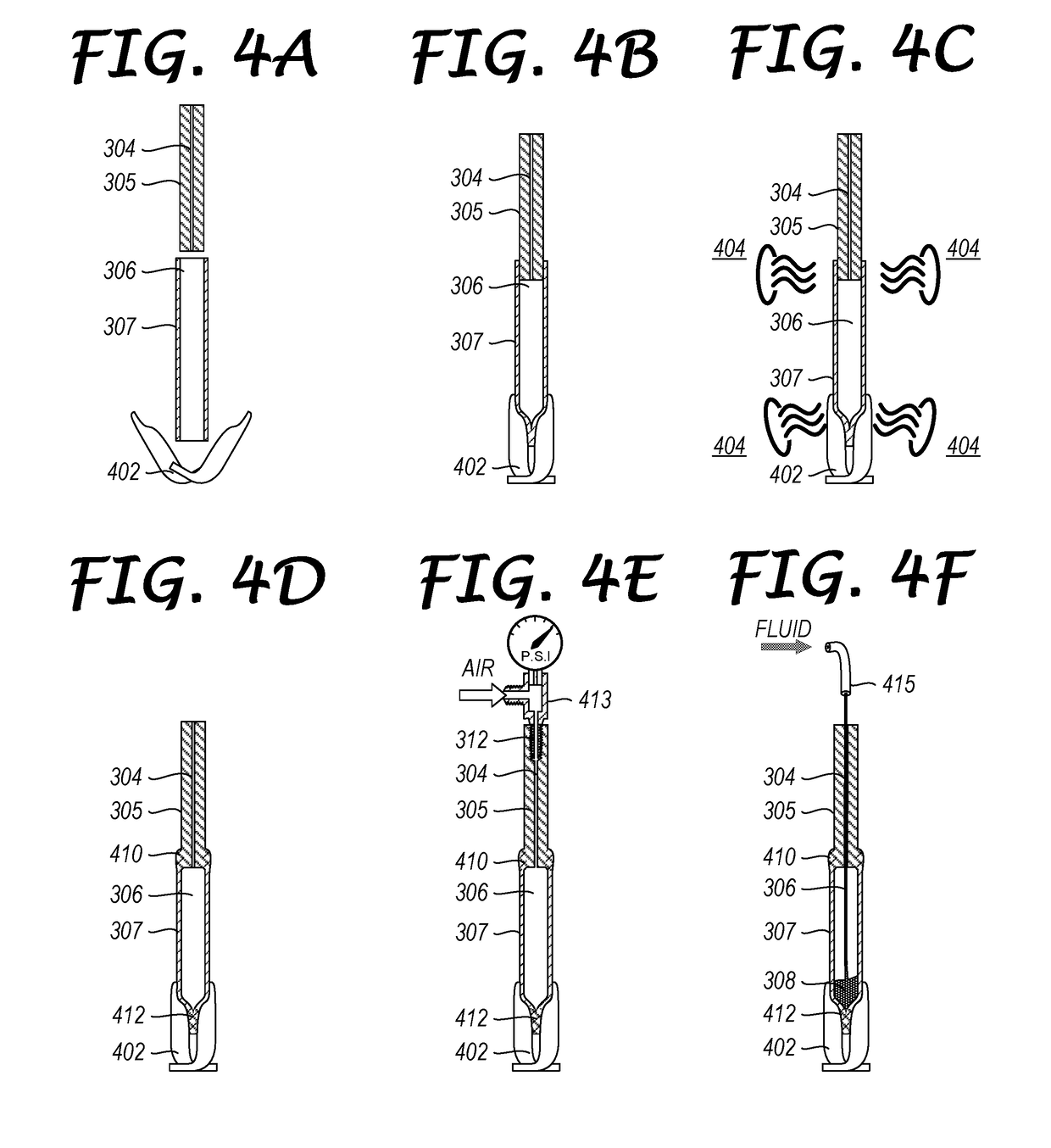Pressure Sensor System
a sensor system and pressure sensor technology, applied in the direction of machines/engines, process and machine control, instruments, etc., can solve the problems of inability to accurately measure, high cost of special-use pressure sensors, and inability to meet the needs of general-use applications, etc., to achieve accurate measurement and good ultraviolet ray transmission
- Summary
- Abstract
- Description
- Claims
- Application Information
AI Technical Summary
Benefits of technology
Problems solved by technology
Method used
Image
Examples
Embodiment Construction
Element Reference Number Designations
[0048]
100: Deflection-Type Pressure Sensor102: Case103: (Pressurized) Fluid Medium104: Biased Diaphragm105: Measurement Chamber106: Magnet108: Hall Effect Linear Position Sensor110: Connection Pins112: Diaphragm Isolation Seal114: Protective Cap200: Piezo-Type Pressure Sensor202: Case204: Base206: Piezo-Electric Die207: Contacts208: Signal Amplifying Electronics210: Connection Pins300: Generic Low Pressure Sensor System302: OTS Low Pressure Sensor303: Temperature Thermistor304: Capillary Channel305: Support Mandrel306: Internal Pressure Chamber306-1′: Internal Pressure Chamber (Length l1′)306-2′: Internal Pressure Chamber (Length l2′)307: Pressure Bladder307-1: Pressure Bladder (Length l1)307-1′: Pressure Bladder (Length l1′)307-2′: Pressure Bladder (Length l2′)308: Measurement Fluid309: Hazardous Fluid Medium310: Compression Fitting / Tube Nut312: Male Threaded Port / Coupling315: Compression Fitting (Pressure Isolator)400: Low Pressure Sensor Syste...
PUM
 Login to View More
Login to View More Abstract
Description
Claims
Application Information
 Login to View More
Login to View More - R&D
- Intellectual Property
- Life Sciences
- Materials
- Tech Scout
- Unparalleled Data Quality
- Higher Quality Content
- 60% Fewer Hallucinations
Browse by: Latest US Patents, China's latest patents, Technical Efficacy Thesaurus, Application Domain, Technology Topic, Popular Technical Reports.
© 2025 PatSnap. All rights reserved.Legal|Privacy policy|Modern Slavery Act Transparency Statement|Sitemap|About US| Contact US: help@patsnap.com



